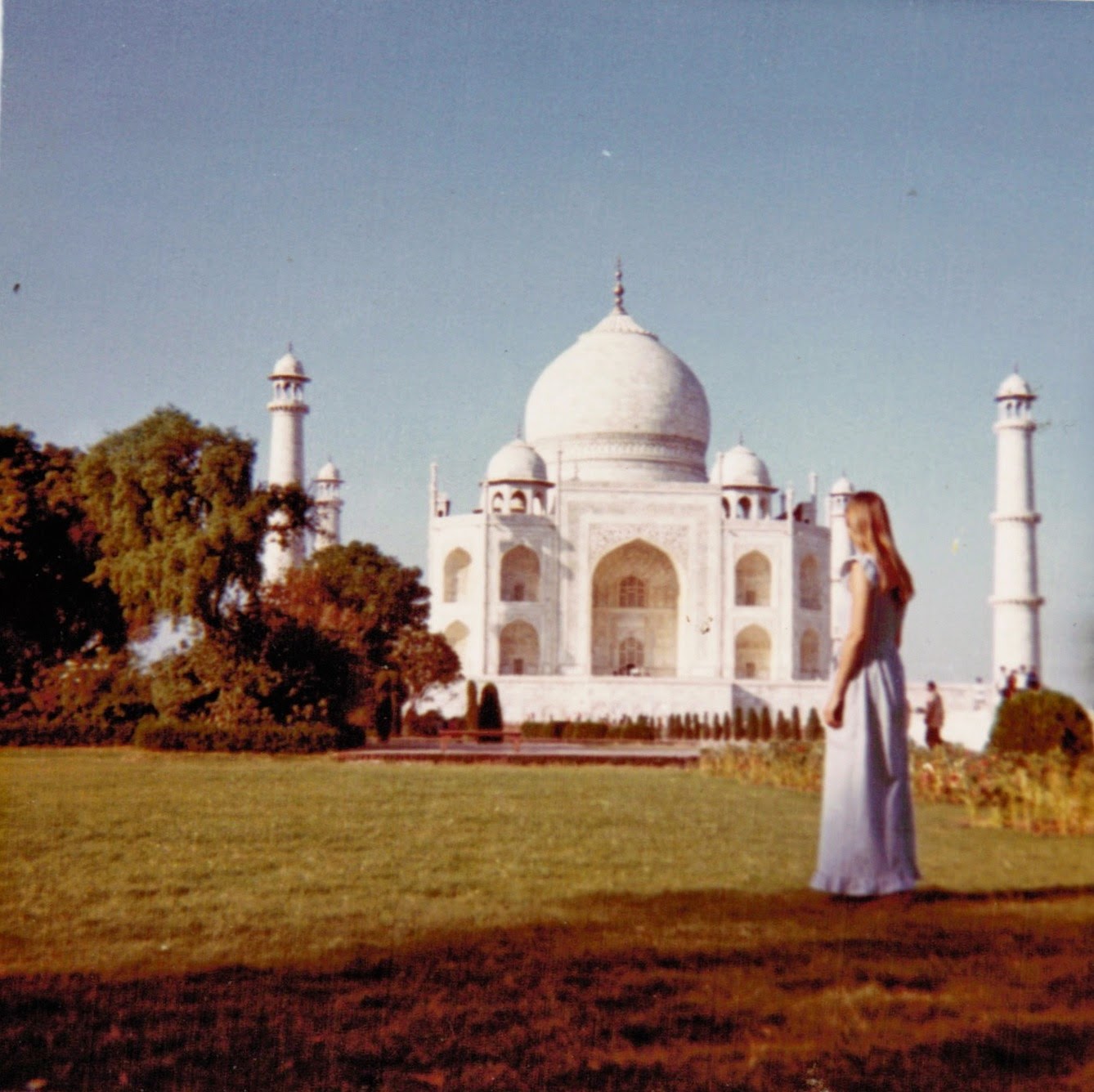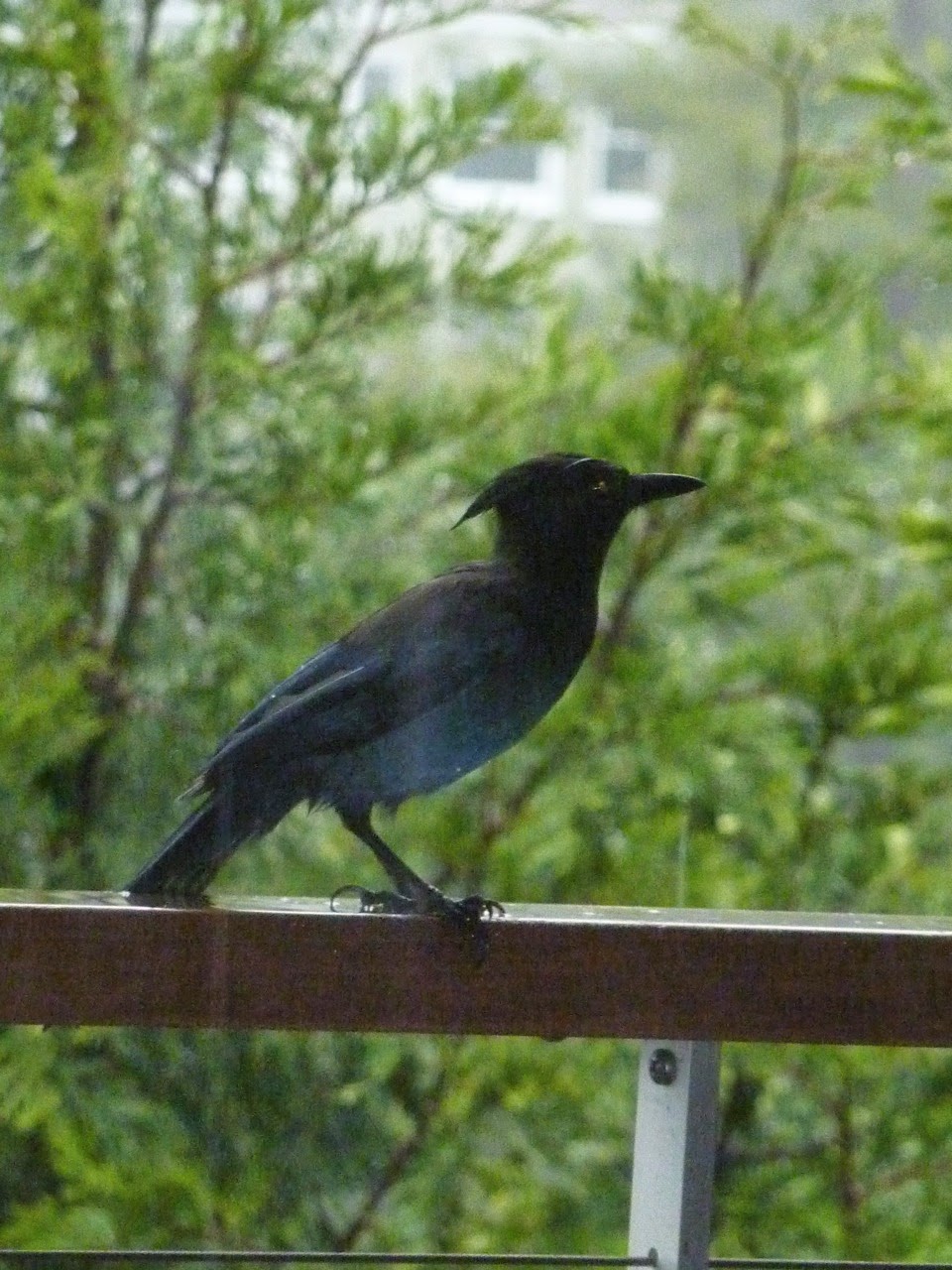 |
| Quote from Invitation to Indian Cooking by Madhur Jaffrey |
 |
| Here I am in Agra in my pinafore, gazing at the Taj Mahal |
 |
| I'm posing in Kerala at the Southern tip of India |
Traveling in India in 1972, I did not have the pleasure of tasting mulligatawny soup, at least that I can remember. In those days I was more interested in art history and dance than in food, so most meals in India are long forgotten. What remain with me are the vibrant flavors. the scrawny chickens in Delhi, the red-hot vindaloos served in Goa, and the heavenly lobster in Kerala on the Southern tip. Though I was careful to eat only cooked food, no unsterilized water, and no yogurt, I got bolder as the months-long trip wore on, and by the end I was indulging in street food with no disastrous results. I came home craving the flavors of the places I had visited.
 |
| I took this photo of a fish market in Goa in 1972 |
After traveling for three months in India and Nepal, I returned to Berkeley, an aficionado of Indian food and culture. But unlike today, there were no Indian restaurants in my neighborhood and few in San Francisco. I can only remember The North India Restaurant, specializing in tandoori dishes, in San Francisco and The Khyber Pass in North Oakland offering nearby Afghanistani cuisine. I seldom indulged. In addition, there were few Indian cookbooks available. The famous Time/Life series," Foods of the World," published a lavishly photographed volume in 1969 called
Foods of India by Santha Rama Rau, which I devoured. Then, in March 1975, when Sunset Magazine printed a recipe for "India-style Chicken Soup (Mulligatawny)" in a section called "You use every bit of the bargain chicken," I tried it. After faithfully completing the numerous steps in the recipe, I found the result to be quite special. The finished soup had a haunting, exotic curry-like flavor and texture that I had not encountered before.
At this point, I have collected many Indian Cookbooks, both recent and rare, so for another description of mulligatawny soup, I referred to one of my favorites,
Classic Indian Cooking by Julie Sahni. She writes,
"I first tasted this soup sixteen years ago in an elegant restaurant in Frankfurt Germany... Contrary to what the name suggests (mullaga means pepper, and tanni means water or broth), what I tasted was an exquisitely delicate broth, faintly laced with spices that brought back the familiar aromas of home...
Because of its unorthodox origin, Indian cooks have had a field day exercising their creative genius with it. As a result, there are innumerable interesting variations of this soup around the world today...
This is the one occasion on which I set aside my spices and use a commercial curry powder blend, because then only am I able to re-create the flavor and aroma that once captured my senses."
Longing recently for something exotic, I unearthed the old Sunset Magazine recipe in my files and set about adapting it to my present tastes and habits. This meant using less butter, leaving out the flour, and using freshly cooked garbanzos instead of canned. The idea of utilizing the canned garbanzo liquid didn't appeal to me. Here's the adapted recipe:
 |
| simmering chicken legs in broth with veggies |
First, I made "stewing broth" as instructed. I used two large whole chicken quarters, though the recipe calls for one whole chicken. I simmered them in 5 cups chicken broth and 3 cups water, with one small onion, a stalk of celery, one carrot, 1 t. salt, 2 cloves, 1 T. coriander seeds and one half cup grated coconut. I skimmed fat from the broth and boiled it for 30 min. until the chicken was just done. Then I removed the skin, took the meat off the bones, reserved it and strained the broth, pressing on the contents through a metal strainer. That was my broth.
I chilled the meat and broth til I was ready to make the
Soup: In a soup kettle, melt 2 T butter. Add 1 medium sized onion, finely chopped, 2 cloves minced garlic, 3 t. curry powder, 1/2 t. turmeric and saute until onion is soft. I decided to add three thickly sliced, parboiled carrots to the soup at this point. Stir in prepared broth, and simmer for 15 minutes. Whirl 1 can garbanzo beans with their liquid (or about 2 to 3 cups cooked bulk garbanzos) in the food processor with some water to thin the mixture. Add to soup with all reserved chicken. Cook about 15 minutes, stirring often. Season to taste with salt and pepper. Add prepared brown basmati rice, lemon slices and chopped cilantro to soup bowls before serving. (serves 4)
The recipe, printed in 1975, concludes:
"At 49 cents a pound, our whole chicken cost $1.47, serving 4 for 37 cents each."
 |
| Mulligatawny soup adapted from the Sunset Magazine recipe |
My two favorite Indian cookbooks, pictured below, are: Julie Sahni, Classic Indian Cooking, New York, William Morrrow, 1980 and Madhur Jaffrey, An Invitation to Indian Cooking, New York, Alfred A. Knopf, 1973. Both authors have written many other excellent books on Indian food and cooking.


















